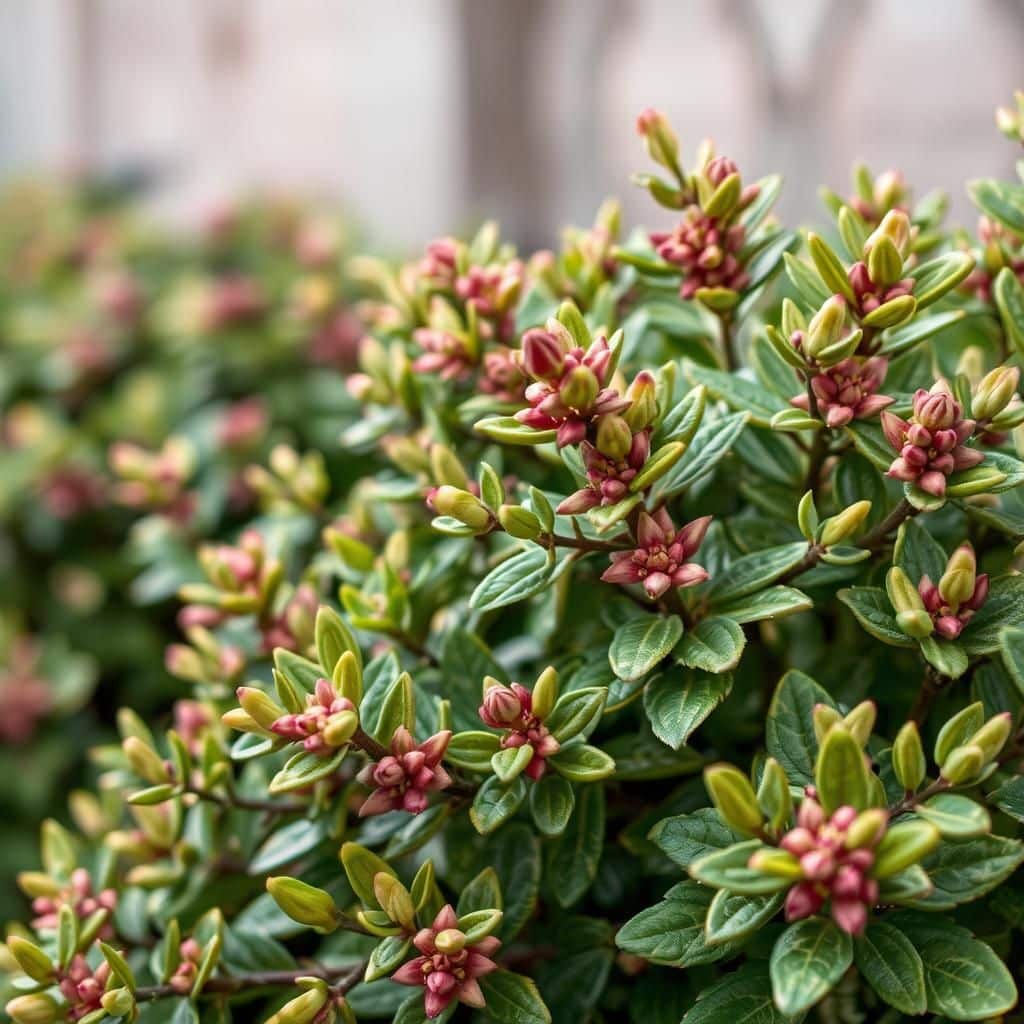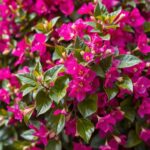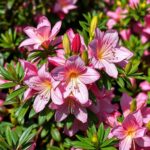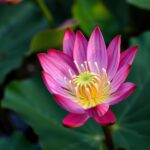Discover Which is an Example of a Shrub? A Beginner's Guide to Shrubs

Understanding the world of gardening can be overwhelming, especially for beginners eager to incorporate lush greenery into their landscapes. Among the many plant types, shrubs play a crucial role in creating attractive gardens. However, distinguishing shrubs from other plants can be challenging. In this guide, we will explore what defines a shrub, present clear examples, and highlight their unique characteristics and benefits. Whether you are looking to enhance your yard, create privacy, or add color, this article aims to provide essential insights into shrubs, enabling you to make informed choices for your gardening endeavors.
Examples of Common Shrubs
A well-known example of a shrub is the boxwood (Buxus), characterized by its dense foliage and rounded shape. Often used in landscaping, boxwoods are popular for creating formal hedges and topiaries due to their ability to withstand pruning and shaping. They thrive in a variety of soil types and can be planted in both sunny and shady environments, making them versatile choices for gardens. Other common examples of shrubs include hydrangeas, rhododendrons, and azaleas, each offering unique flowers and foliage that enhance garden aesthetics.
What Characteristics Define a Shrub?
Shrubs are perennial plants that typically have multiple stems and are shorter than trees, usually reaching heights of 1 to 6 meters. They play a crucial role in ecosystems, providing habitat and food for various species. Shrubs are often characterized by their woody stems, which allow them to survive in diverse environmental conditions. Unlike herbaceous plants, which die back to the ground each year, shrubs maintain their structure through seasonal changes, making them resilient in various climates.
Benefits of Planting Shrubs in Gardens
Integrating shrubs into a garden design offers numerous benefits. They can add color and texture through their flowers and foliage, contributing to a garden's aesthetic appeal. Shrubs also play a significant role in soil erosion control by stabilizing soil with their root systems. Furthermore, they can provide privacy and serve as effective windbreaks while attracting beneficial wildlife such as pollinators and birds.
Different Types of Ornamental Shrubs
Ornamental shrubs are prized for their aesthetic qualities rather than functional uses. Varieties such as hydrangeas, lilacs, and forsythias are cherished for their stunning blooms. Each type of ornamental shrub typically has a distinct flowering season and varies in height, allowing gardeners to select them based on the desired visual impact. These shrubs often require specific care and maintenance to flourish, including proper watering and pruning techniques.
Common Shrubs Used for Landscaping
In landscaping, certain shrubs are favored for their durability and ease of maintenance. For instance, laurel, barberry, and dwarf conifers are commonly employed for foundation plantings and borders. These shrubs are not only resilient but also provide year-round interest, whether through colorful foliage or structural form. Landscape designers often select shrubs that complement the local climate and soil conditions to ensure optimal growth.
Caring for Your Shrubbery
Maintaining healthy shrubs involves several essential practices, including pruning, watering, and fertilization. Regular pruning encourages new growth and helps shape the shrub for aesthetic purposes. It is vital to water shrubs adequately, especially during dry spells, as this promotes root development. Additionally, applying a balanced fertilizer can provide the necessary nutrients without overwhelming the plants, ensuring they thrive and contribute to the overall beauty of the garden.
| Types of Shrubs | Key Features | Common Uses |
|---|---|---|
| Boxwood | Dense foliage, evergreen | Formal hedges, topiaries |
| Hydrangea | Large clusters of flowers | Ornamental borders |
| Rhododendron | Showy blossoms, acidic soil preference | Shade gardens, foundations |
| Barberry | Thorny stems, colorful foliage | Security barriers, hedges |
| Forsythia | Bright yellow flowers, early bloom | Landscape accents, privacy screens |
Which of the following is an example of a shrub?
:max_bytes(150000):strip_icc()/list-of-shrubs-2132442-3b363c4cbe854cc7ae9592ed024cb514.jpg)

A common example of a shrub is the hibiscus. Shrubs are defined as small to medium-sized woody plants that are typically characterized by multiple stems, a height of less than 6 meters (20 feet), and they often have a bushy appearance. They can be used in various landscaping applications and serve as important components of gardens and natural ecosystems.
Characteristics of Shrubs
Shrubs have distinct characteristics that differentiate them from trees and other types of plants. Some of these features include:
- Height: Typically less than 6 meters (20 feet).
- Multiple stems: Shrubs usually have multiple woody stems emerging from the base.
- Leaf structure: They can have broad leaves or needle-like leaves, depending on the species.
Diversity of Shrub Species
There is a wide variety of shrub species, each adapted to different environments and uses. Some common examples include:
- Boxwood: Often used for decorative hedging in gardens.
- Lavender: Valued for its fragrance and use in aromatherapy.
- Rosemary: A culinary herb that also serves as an attractive landscape plant.
Uses of Shrubs in Landscaping
Shrubs are extensively used in landscaping for various reasons. Their uses include:
- Aesthetics: They enhance the beauty and structure of gardens.
- Privacy: Taller shrubs can act as natural screens or hedges.
- Wildlife habitat: Shrubs provide food and shelter for birds and small animals.
Growing Conditions for Shrubs
Understanding the growing conditions that suit shrubs is crucial for successful cultivation. Key factors include:
- Soil type: Most shrubs prefer well-drained soil, but some can tolerate poorer conditions.
- Sunlight: Many shrubs thrive in full sun, while others prefer partial shade.
- Watering needs: Established shrubs typically require less water, while new plantings need regular moisture.
Common Pests and Diseases Affecting Shrubs
Shrubs can be susceptible to various pests and diseases. Awareness of these issues is beneficial for maintaining healthy plants. Common threats include:
- Aphids: These small insects can weaken shrubs by feeding on their sap.
- Powdery mildew: A fungal disease that can affect many types of shrubs, leading to white powdery spots on leaves.
- Root rot: Often caused by overwatering, this disease can severely damage or kill shrubs.
What is an example of a herb?

One example of a herb is basil. Known for its aromatic leaves, basil is commonly used in various cuisines, particularly in Italian dishes. Its distinct flavor adds depth to sauces, salads, and pestos, making it a favorite among chefs and home cooks alike.
See also:
What is a Herb?
A herb is defined as a plant that has savory or aromatic properties, often used for flavoring food, medicine, or fragrances. Herbs are typically characterized by their green, leafy parts and are often distinguished from other plants like shrubs and trees. They can be used fresh or dried and play a significant role in culinary and medicinal applications.
- Flavor Enhancement: Herbs are used to enhance the flavor of dishes.
- Aromatic Qualities: Many herbs have strong scents that can elevate a meal.
- Culinary Applications: Various herbs are staples in cooking, providing essential taste.
Common Types of Herbs
There are numerous types of herbs, each with unique characteristics and uses. Common examples include basil, parsley, cilantro, thyme, and rosemary.
- Basil: Often associated with Italian cuisine.
- Parsley: A versatile garnish and flavoring agent.
- Cilantro: Popular in Mexican and Asian dishes.
The Benefits of Using Herbs
Using herbs in cooking offers a multitude of benefits. Not only do they enhance flavor, but many herbs also possess health benefits. Incorporating them into meals can elevate both the taste and nutritional value of dishes.
- Health Benefits: Many herbs contain antioxidants and vitamins.
- Natural Flavoring: Herbs can reduce the need for added salt and sugar.
- Emotional Well-being: The aroma of certain herbs can promote relaxation.
How to Grow Herbs
Growing your own herbs can be a rewarding experience. Herbs can be cultivated in gardens or pots and thrive in both outdoor and indoor environments. It is important to provide adequate sunlight and water to ensure healthy growth.
- Sunlight: Most herbs require at least 6 hours of sunlight.
- Watering: Over-watering can harm herbs; ensure proper drainage.
- Soil Quality: Use well-draining soil enriched with organic matter.
Cooking with Herbs
Cooking with herbs allows for creativity and experimentation in the kitchen. They can be added at different stages of cooking, each yielding distinct flavor profiles.
- Fresh Herbs: Often added at the end of cooking for vibrant flavor.
- Dried Herbs: Usually added earlier in the cooking process to release their essential oils.
- Herb Blends: Combining different herbs can create unique and complex flavors.
Questions from Our Readers
What is a shrub?
A shrub is a type of plant that is typically smaller than a tree and has multiple woody stems. They can vary in size and shape, providing aesthetic value and serving various purposes in gardens and landscapes.
Can you give an example of a shrub?
One common example of a shrub is the boxwood (Buxus). This evergreen shrub is often used in landscaping for shaping hedges or borders due to its dense foliage and ability to be easily pruned.
What are the benefits of having shrubs in a garden?
Shrubs offer numerous benefits such as enhancing aesthetic appeal, providing privacy, serving as a habitat for wildlife, and offering windbreaks. They can also help in soil stabilization and can be used to create natural barriers.
See also:
How do shrubs differ from other plants?
Shrubs typically have a multistemmed structure and are shorter than trees, which usually have a single main trunk. Unlike herbaceous plants that die back to the ground, many shrubs are woody and endure various weather conditions, adding to their durability in landscapes.

If you want to read more articles like Discover Which is an Example of a Shrub? A Beginner's Guide to Shrubs, we recommend you check out our Shrubs category.
Leave a Reply
Related Articles